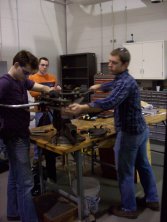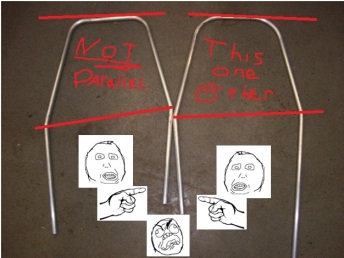I’ve found recordkeeping to be one of those habits that has a disproportionately high benefit compared to how little effort it takes to do. It’s such a simple thing to do that my mind is blown every time I see a massive holdup caused by the lack of it.
Whether it’s a company failing to maintain a list of suppliers, a bill of materials containing zero part numbers, or seeing engineers reinvent the wheel because they didn’t know it existed elsewhere, it’s painful to watch every time. Kind of like seeing a train derailing because of a penny, or seeing someone forget to check if the coast was clear before digging for gold.
Writing down the shit that you do is really a form of preventative maintenance. A bit of extra work now will save you and others from massive headaches in the future. A direct result of my recordkeeping habit is my directory of online engineering tools that I have found to be immensely useful. The EngineerDog ‘Best of the Internet’ directory is a perpetual work in progress and can be found here.
Let me tell you about some personal train wrecks that have lead me to seek and record the resources on that list.
My college senior project was an ambitious one: four students designed and built a custom rolling chassis for a solar powered car in two semesters. (I know that’s a huge project, while we were short on experience we weren’t lacking enthusiasm. I’ll be talking more about vehicle design in the future!). For now we’ll skip past the painfully long design phase to build day number 1. There we were with the tools ready, drawings printed, and a stack of twelve feet long aluminum tubes sitting in a pile ready for cutting. All we needed to do was turn that pile of metal into a solar car frame.
In retrospect the frame alone would have been a worthy project.
Without any forethought we just started cutting everything in sight to match the drawings. It was only after we ran out of material did we realize the horrible inefficiency of our cutting method. We had to go out for more material because we had wasted so much. Looking back, we would have greatly benefitted from the use of a cutting calculator. As simple as it sounds, choosing the best combinations of lengths to cut from stock beam sizes requires non-linear equations to optimize. This is not a trivial task and a cut list calculator can save you a lot of wasted material.
.
After we got the tubes cut we moved to the next thing on the list thinking let’s just bend the roll cage real quick and we’ll be on our merry way.
.
.
.
.
.
We’ll just dust off ol’ bendy and have this roll cage done before you can say…
…shit
Tube bending is not of those things you do without a plan of action. The trouble is that normal drawing details call out the center points of the bends but not the bending start and end points, which vary with the bending radius in non-obvious ways. We screwed it up twice before taking the time to enlist a program to help us know where to bend.
.
A couple months and few more bad decisions later we found ourselves needing to design custom hubs and spindles for the front suspension. These parts were critical to the chassis and required very tight dimensions within a specific range to function properly. I knew that if the bearings were packed into a hole even a few thousandths of an inch too small that they would seize up. What I didn’t realize was just how quickly a hone can remove that much material material from a hole… .
I needed a slip fit, not a Scott’s Mom fit.
It turns out that hole tolerance is kind of really important and we ended up having to use the equivalent of superglue to keep the bearings from falling out of holes they should have been press fit into. Choosing the correct dimensions for shafts and holes is not a self-explanatory task. The tolerances required to achieve a specific will fit vary with the diameter of the hole, so it best to look up this information from a table like the one in the machinists handbook. (A book I highly recommend by the way.) Alternatively, you can use this free ANSI Tolerances and fits calculator.
That’s it’s for now, but expect to see more best of the internet awards in the near future. I will be adding to the list slowly because I use strict approval criteria to prevent clutter from rendering the list useless. This information has proven itself invaluable to me so I obviously love coming across new sources, let me know if you have any recommendations that you think should make the list!





[…] If you liked reading about the three aforementioned websites then you’re definitely going to like my Best of the Internet List here. […]
LikeLike